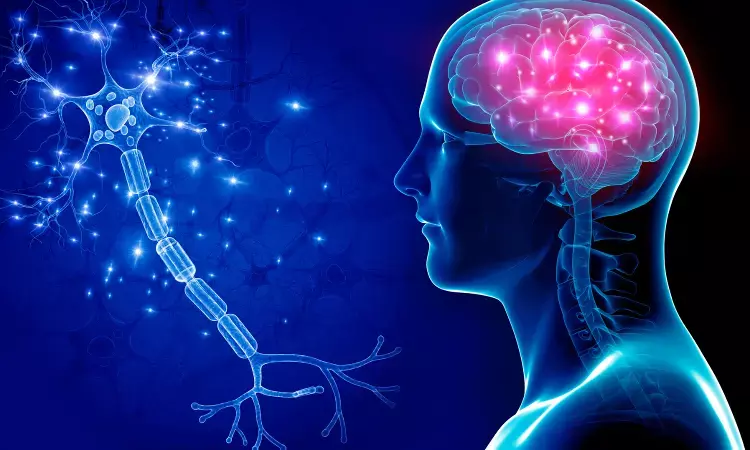- Home
- Medical news & Guidelines
- Anesthesiology
- Cardiology and CTVS
- Critical Care
- Dentistry
- Dermatology
- Diabetes and Endocrinology
- ENT
- Gastroenterology
- Medicine
- Nephrology
- Neurology
- Obstretics-Gynaecology
- Oncology
- Ophthalmology
- Orthopaedics
- Pediatrics-Neonatology
- Psychiatry
- Pulmonology
- Radiology
- Surgery
- Urology
- Laboratory Medicine
- Diet
- Nursing
- Paramedical
- Physiotherapy
- Health news
- Fact Check
- Bone Health Fact Check
- Brain Health Fact Check
- Cancer Related Fact Check
- Child Care Fact Check
- Dental and oral health fact check
- Diabetes and metabolic health fact check
- Diet and Nutrition Fact Check
- Eye and ENT Care Fact Check
- Fitness fact check
- Gut health fact check
- Heart health fact check
- Kidney health fact check
- Medical education fact check
- Men's health fact check
- Respiratory fact check
- Skin and hair care fact check
- Vaccine and Immunization fact check
- Women's health fact check
- AYUSH
- State News
- Andaman and Nicobar Islands
- Andhra Pradesh
- Arunachal Pradesh
- Assam
- Bihar
- Chandigarh
- Chattisgarh
- Dadra and Nagar Haveli
- Daman and Diu
- Delhi
- Goa
- Gujarat
- Haryana
- Himachal Pradesh
- Jammu & Kashmir
- Jharkhand
- Karnataka
- Kerala
- Ladakh
- Lakshadweep
- Madhya Pradesh
- Maharashtra
- Manipur
- Meghalaya
- Mizoram
- Nagaland
- Odisha
- Puducherry
- Punjab
- Rajasthan
- Sikkim
- Tamil Nadu
- Telangana
- Tripura
- Uttar Pradesh
- Uttrakhand
- West Bengal
- Medical Education
- Industry
Among stroke patients Ultra early platinum half-hour intervention achievable: Study

Emergency medicine has developed not only the concept of the golden hour, but also the platinum half-hour to emphasize treatment speed for time-sensitive conditions like myocardial infarction and stroke.However in patients of acute stroke, platinum half-hour treatment after onset of symptoms has not been previously characterized.
Researchers have found in analysis of FAST-MAG trial, that in patients of stroke ultra-early stroke intervention is a reachable target. However researchers acknowledged that prehospital treatment is probably the only practical way to employ stroke interventions within the platinum half-hour.
According to Dr Fatima Pariona-Varga at Peru's National University of Cajamarca School of Medicine and colleagues in FAST-MAG trial, originally designed to test magnesium as a neuroprotective agent, 12.1% of 1,680 stroke patients received treatment by paramedics within 30 minutes of the time they were last known to be well.
The study has been published in the journal Stroke.
In this cohort study, the researchers analyzed patients enrolled in the FAST-MAG (Field Administration of Stroke Therapy–Magnesium) trial, testing paramedic prehospital start of neuroprotective agent ≤2 hours of onset. The features of all acute cerebral ischemia, and intracranial hemorrhage patients with treatment starting at ≤30 m of last known well were compared with later-treated patients.
Study participants had a median age of 69 years, and the group included approximately 45% women. Patients scored a median 4 on the prehospital Los Angeles Motor Scale and 8 on early-hospital NIH Stroke Scale deficits.
Certain patients were more likely to be treated in the platinum half-hour in FAST-MAG like
1. Acute cerebral ischemia: those with severe motor deficits on first prehospital assessment and younger age
2. Intracranial cranial hemorrhage: women, non-Hispanic people, and people with more severe motor deficits
The features of all acute cerebral ischemia, and intracranial hemorrhage patients with treatment starting at ≤30 m of last known well were compared with later-treated patients.
Among 1680 patients, 203 (12.1%) received study agents within 30 minutes of last known well. Among platinum half-hour patients, median onset-to-treatment time was 28 minutes (interquartile range, 25–30), and final diagnoses were acute cerebral ischemia in 71.8% (ischemic stroke, 61.5%, TIA 10.3%); intracranial hemorrhage in 26.1%; and mimic in 2.5%. Clinical features among platinum half-hour patients were largely similar to later-treated patients and included age 69 (interquartile range, 57–79), 44.8% women, prehospital Los Angeles Motor Scale median 4 (3–5), and early-postarrival National Institutes of Health Stroke Scale deficit 8 (interquartile range, 3–18).
Platinum half-hour acute cerebral ischemia patients did have more severe prehospital motor deficits and younger age; platinum half-hour intracranial hemorrhage patients had more severe motor deficits, were more often female, and less often of Hispanic ethnicity. Outcomes at 3 m in platinum half-hour patients were comparable to later-treated patients and included freedom-from-disability (modified Rankin Scale score, 0–1) in 35.5%, functional independence (modified Rankin Scale score, 0–2) in 53.2%, and mortality in 17.7%.
The researchers concluded that Prehospital initiation permits treatment start within the platinum half-hour after last known well in a substantial proportion of acute ischemic and hemorrhagic stroke patients to the tune of more than 1 in 10 enrolled.
Hyperacute platinum half-hour patients were largely similar to later-treated patients and are an attainable target for treatment in prehospital stroke trials.
The study underscores the potential value of moving treatment into the prehospital setting. The data of the study sets the stage for future clinical trials to test the type of prehospital treatments that will be ideal to reach stroke patients during this crucial platinum time window a neuroprotectant or a thrombolytic agent.
For further reference log on to:
Dr Kamal Kant Kohli-MBBS, DTCD- a chest specialist with more than 30 years of practice and a flair for writing clinical articles, Dr Kamal Kant Kohli joined Medical Dialogues as a Chief Editor of Medical News. Besides writing articles, as an editor, he proofreads and verifies all the medical content published on Medical Dialogues including those coming from journals, studies,medical conferences,guidelines etc. Email: drkohli@medicaldialogues.in. Contact no. 011-43720751


